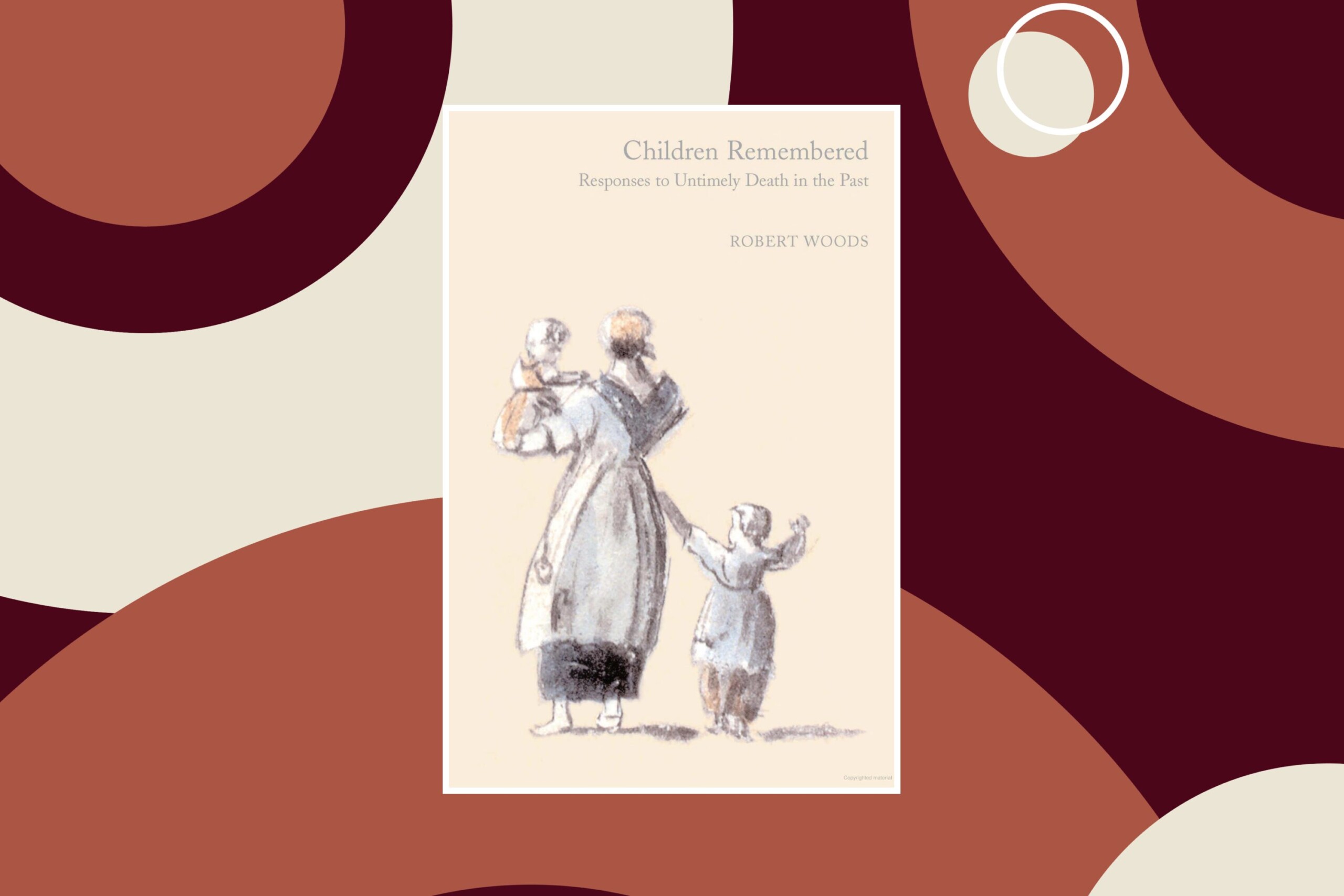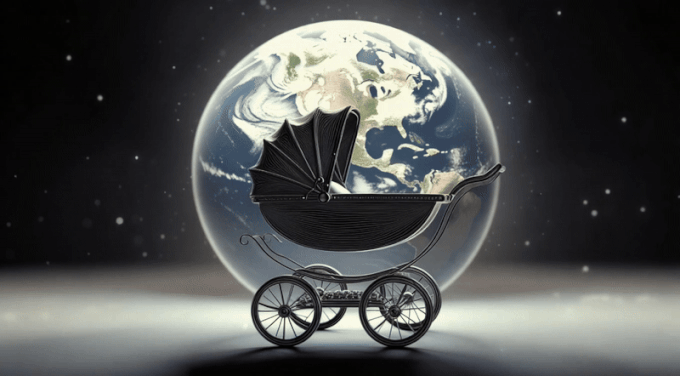Summary: Robert Woods’s book explores how parents and society mourned child deaths in an era when losing a child was tragically common. While some historians have suggested that frequent child mortality dulled emotional bonds, Woods presents evidence—from poetry, grave epitaphs, and personal accounts—showing that parents deeply grieved their lost children. Over time, increasing prosperity and changing social attitudes led to a growing cultural emphasis on childhood, shaping how families remembered and valued their children.
In his book Children Remembered: Responses to Untimely Death in the Past, British historian Robert Woods examines how adults reacted to the early deaths of children in a world where death in childhood was extremely common.
Woods seeks to answer questions such as: “Was the bond of emotional attachment between parents and offspring as close in the past as it is said to be today?” Or did sky-high rates of child mortality lead to diminished attachment and limited mourning of children who died? There has been considerable debate on this matter among historians. While some such as Philippe Ariès have theorized that parents were once largely indifferent to the loss of their offspring, others have critiqued this assessment. It is true that, numbed by frequent child deaths, parents often did not make as much of a show of their grief. Children died with such frequency that their graves often went unmarked. “Prior to the fifteenth century, children’s tombs either did not exist or were very rare,” Woods writes.
But although losing a child to death in infancy or early childhood was a common, indeed near-universal experience among parents, there is no reason to think that the loss was any less emotionally painful for all its ordinariness. The words of parents and other witnesses to early child death often suggest acute pain.
In the preindustrial age, almost all parents suffered the loss of a child. Woods notes that “infant mortality was by today’s standards very high in the early modern period. Approximately half of all live births never survived to age twenty. Most parents therefore experienced the death of their own children, probably more than once.”
The poet Ben Jonson (1572–1637) wrote touching poems about his deceased children, including these words for a son who died at age seven: “Rest in soft peace, and, ask’d, say here doth lye / Ben. Ionson his best piece of poetrie.” Robert Herrick’s (1591–1674) poem “To the Lady Crew, upon the Death of Her Child”advises a mother not to weep, because her dead child is at least no longer in pain: “And (pretty Child) feeles now no more / Those paines it lately felt before.”
Looking at statistics and figures of infant mortality can give an idea of how horrifyingly frequent childhood death was in the preindustrial age. But reading firsthand accounts of grief conveys a vivid sense of what it was like to actually live in a world of such frequent early deaths. Examining the mourning poetry, including grave epitaphs, that adults composed for children in the early modern period is especially revealing.
Many surviving testimonies suggest that mothers and fathers typically loved their children then as much as now, and their grief was correspondingly intense. Consider these lines from “To an Infant Expiring the Second Day of Its Birth” by a poet who lost several of her children prematurely, Mehetabel Wesley Wright (1697–1750), urging her day-old infant to look at her one last time before dying:
Ah! regard a mother’s moan,
Anguish deeper than thy own!
Fairest eyes, whose dawning light
Late with rapture blest my sight,
Ere your orbs extinguish’d be,
Bend their trembling beams on me!
Thomas Gray (1716–1771) composed the poignant “Epitaph on a Child”:
Here, freed from pain, secure from misery, lies,
A child, the darling of his parents’ eyes:
A gentler lamb ne’er sported on the plain,
A fairer flower will never bloom again.
Few were the days allotted to his breath;
Now let him sleep in peace his night of death.
Members of the nobility were not spared from the horrifically high rates of infant mortality in the preindustrial age. Elizabeth Egerton (1626–1663), an English countess, wrote a poem for her son Henry, who died at just 29 days old:
[He] lived dayes as many as my years,
No more; which caused my greeved teares;
Twenty and Nine was the number;
And death hath parted us asunder.
The famous poet John Milton’s (1608–1674) lengthy poem “On the Death of a Fair Infant Dying of a Cough” contains several passages that vividly portray the pain of losing a child, such as this snippet:
Yet can I not persuade me thou art dead
Or that thy corse [corpse] corrupts in earth’s dark womb,
Or that thy beauties lie in wormy bed,
Hid from the world in a low-delved tomb
English poet and painter Thomas Flatman (1635–1688) wrote lyrics for a pastoral song titled “Coridon on the Death of His Dear Alexis,” which reads in part:
Return, Alexis! O return!
Return, return, in vain I cry;
Poor Coridon shall never cease to mourn
Thy too untimely, cruel destiny.
Farewell forever, charming boy!
And with Thee, all the transports of my joy!
Even when poets wrote of such deaths in works of fiction, they often drew on their own all-too-real experiences of child loss. Flatman concluded an epitaph he wrote for his eldest son with these words: “Believe this, mortal, what thou valuest most, / And set’st thy soul upon, is soonest lost.”
Heartrendingly, the American colonial poet Jane Colman Turell (1708–1735) wrote of losing three children in a row, each pregnancy ending in a stillbirth:
Thrice in my womb I’ve found the pleasing strife,
In the first struggles of my infant’s life:
But O how soon by heaven I’m call’d to mourn,
While from my womb a lifeless babe is torn?
Born to the grave ’ere it had seen the light,
Or with one smile had cheered my longing sight.
Back across the pond, the English poet Elizabeth Boyd’s (1710–1745) poem “On the Death of an Infant of Five Days Old, Being a Beautiful but Abortive Birth” contains the lines,
How frail is human life! How fleet our breath,
Born with the symptoms of approaching death!
What dire convulsions rend a mother’s breast,
When by a first-born son’s decease distressed.
So common were child deaths that practically every major poet explored the subject. (The words “tomb” and “womb” were frequently rhymed, as Woods observes.) Robert Burns (1759–1796) wrote “On the Birth of a Posthumous Child.” Percy Bysshe Shelley (1792–1822) wrote multiple poems to his deceased son, containing lines such as “My lost William . . . Where art thou, my gentle child?” Samuel Taylor Coleridge’s (1772–1834) poem “On an Infant, Who Died Before Its Christening” offers the lines, “Its head upon the Mother’s breast, / The baby bow’d, and went without demur.” Consider the pain captured by these lines from Shakespeare’s play King John, spoken by the character Constance upon her son’s death: “Grief fills the room up of my absent child. . . . O Lord! My boy, my Arthur, my fair son! My life, my joy, my food, my all the world!” (Shakespeare’s own son died in 1596, the same year the playwright may have finished writing King John.)
Woods offers a detailed analysis of the poems and epitaphs in his book, noting that “deeper feelings of grief” are evident in poems where the subject is the writer’s own child or a close relative (as one would expect), and that the degree of grief does not seem to vary greatly with the child’s age or gender (perhaps surprising, as in the more sexist world of the past one might expect the loss of male children to inspire more intense grief).
While it is evident that most parents have always been fond of their children and mourned their loss, childhood was once not viewed as a particularly special or distinct part of life. Only around the time of industrialization did spreading prosperity give parents for the first time the means to indulge their children. The first hints of this change predate industrialization. Woods quotes the philosopher John Locke as observing that “children, in a sense, had become luxury objects upon which their mothers and fathers were willing to spend larger and larger sums of money, not only for their education, but also for their entertainment and amusement.” As people became wealthier, they increasingly took children’s well-being into account. Woods notes that “by the 1740s, a new attitude to children was spreading steadily among the middle and upper classes. This gentle and more sensitive approach to children was but a part of a wider change in social attitudes” that included growing empathy for women, enslaved people, and animals.
Paintings of individual children became more common in the 17th and 18th centuries than in the preceding ones, when such portraits were relatively rare. Seventeenth-century Holland, a remarkable society in many ways that some scholars identify as one of the geographic starting points of the Great Enrichment, produced an unusually high number of children’s portraits. “Many art historians have singled out seventeenth-century Holland as a . . . special case, particularly with respect to the popularity of paintings showing parents and children at home,” Woods writes. Children also came to more often occupy central rather than peripheral positions in family portraits. With such changes, “eighteenth-century artists gave new and special significance to the lives of children.”
Those children’s lives were, as Woods makes clear, often far too short.





